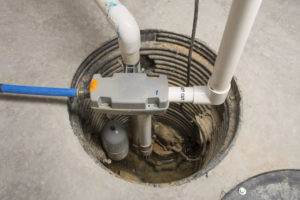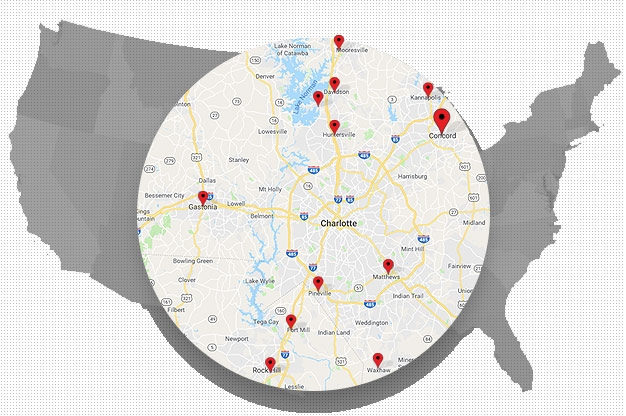Your Basement’s BFF: A Complete Guide to Sump Pumps

Does the rainy season put you on edge because your basement floods during every storm? Maybe you keep a mop and bucket handy, along with an industrial fan to sop up the water.
We have great news for you!
People who install sump pumps in a basement have fewer sleepless nights worrying about losing precious personal belongings to basement floods. Read our guide and see if you don’t think a basement sump pump is a good idea.
Goodbye, Wet Basement
When you get tired of bailing out your basement, consider installing a sump pump.
The primary job of this home improvement tool is keeping the area under your home dry. Ultimately, a sump pump prevents a basement from flooding by collecting water and moving it outside of your home.
A sump pump collects water in a basin called a sump pit. Then water is then pumped out of the pit and either into a lower point in your yard or to the city sewer. Depending on your city’s codes, they may not permit draining into the sewer.
The Ideal Sump Pump
While there are 4 types of sump pumps available for homeowners, we’ll focus on two—submersible and pedestal.
A submersible pump, like its name, is placed underwater in the sump pit. A pedestal pump sits above the sump pit, with the pump motor positioned out of the water.
Submersible pumps are popular because they don’t take up much space, make minimal noise, and can pump water out faster than a pedestal pump.
Homeowners who select pedestal sump pumps find they’re less expensive. They also last longer, primarily because the motor isn’t submerged in water.
If you have a smaller sump pit, the pedestal pump may be a better choice. You might also consider a combination sump pump, which includes a battery backup.
Back up the Pump
If you’ve ever experienced an electrical outage due to the weather, you likely called the power company multiple times. Instead of stressing over when the power should come back on, consider a battery backup.
A battery backup ensures your pump isn’t disabled when you lose power. It’s a little extra insurance policy that gives you peace of mind, knowing your basement is protected from flooding.
Your battery-powered sump pump can keep pumping out water for up to two days.
How Do I Install a Sump Pump in the Basement?
Are you a DIY aficionado? If so, and you have the right tools, installing a sump pump may not be a difficult project.
The first step is locating where the water collects. Make sure you choose a location close to a ground fault circuit interrupter (GFCI) outlet. If you don’t find a GCFI near your proposed location, hire an electrician to install one.
You’ll also dig a hole for your sump pit, which you’ll add gravel to before placing the sump pump in the hole. There are a few additional steps, including the installation of a drain system to move water out of the pump and away from your house.
While it’s not an impossible project, many homeowners opt to hire a professional who knows everything about sump pump installation.
Have Questions About Sump Pumps?
If your basement floods, installing a sump pump is an excellent investment. Choose the best type, buy a battery backup, and make sure you know as much as possible about installing sump pumps.
There’s nothing like peace of mind, knowing your basement won’t fill up with water every time it rains.
For questions about sump pumps or waterproofing, contact us today.
Recent Posts
- How Crawl Space Encapsulation Benefits the Environment – An Expert Guide
- 6 Ways Professionals Keep Your Crawl Space in Top Shape
- Structural Repair Solutions for Crawl Spaces, Basements, and Foundations
- Essential Crawl Space Repair Tips Every Homeowner Should Know
- The Importance of Radon Mitigation: Ensuring a Safe Living Environment for Homeowners
Categories
- Basement Mold
- Basement Waterproof Foundation
- Basement Waterproofing
- Crawl Space Dehumidifier
- Crawl Space Encapsulation Cost
- Crawl Space Repair
- Crawl Space Waterproofing
- Encapsulation
- Foundation Repair
- Foundation Waterproofing
- French Drains
- Leaky Basement
- Mold Remediation
- Mold Removal
- Radon
- Slab Jacking
- Sump Pump
- Uncategorized
- Vapor Barrier
- Water Leak
- Waterproofing
- White Mold
Archives
- June 2024
- May 2024
- March 2024
- January 2024
- June 2023
- May 2023
- April 2023
- March 2023
- February 2023
- January 2023
- December 2022
- November 2022
- October 2022
- September 2022
- August 2022
- July 2022
- June 2022
- May 2022
- March 2022
- February 2022
- January 2022
- December 2021
- November 2021
- October 2021
- September 2021
- August 2021
- July 2021
- June 2021
- May 2021
- April 2021
- March 2021
- February 2021
- January 2021
- December 2020
- November 2020
- October 2020
- September 2020
- August 2020
- July 2020
- June 2020
- May 2020
- April 2020
- March 2020
- February 2020
- January 2020
- December 2019
- November 2019
- October 2019
- September 2019
- August 2019
- July 2019
- June 2019
- May 2019

